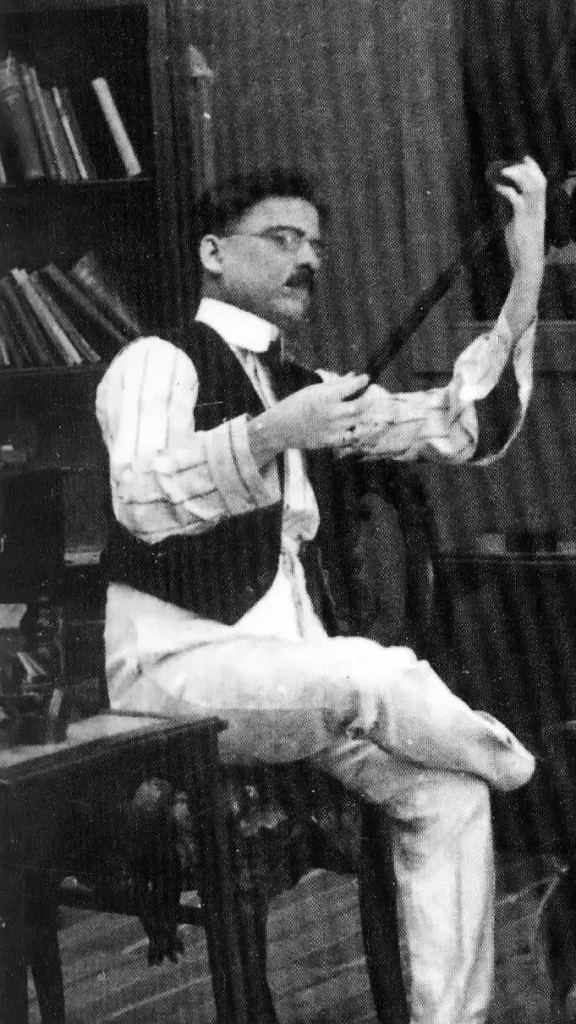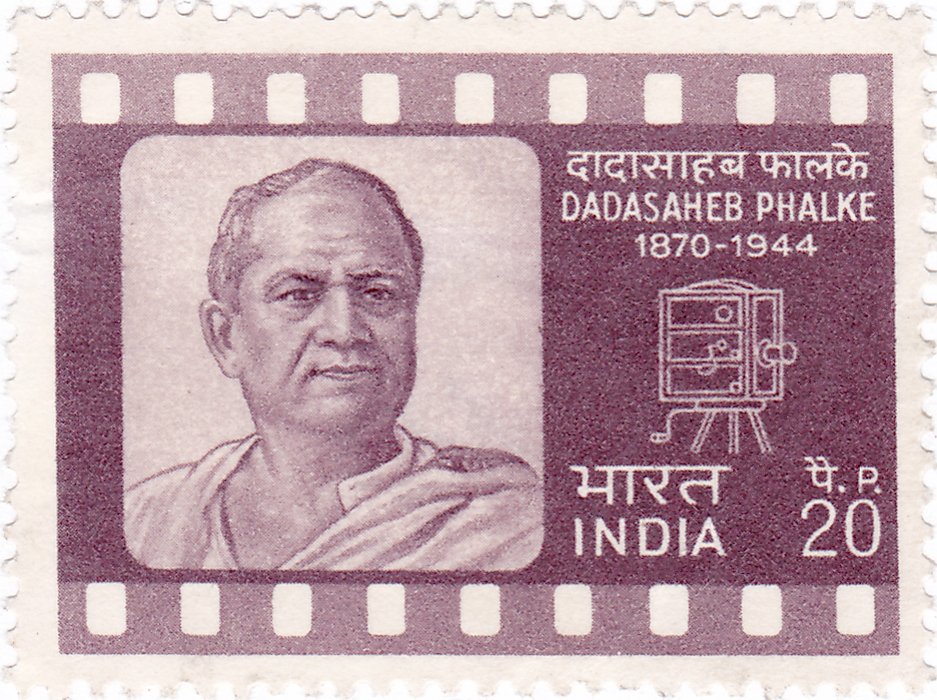Dadasaheb Phalke
Dadasaheb Phalke is revered as the Father of Indian Cinema for the monumental role he played in the birth of the Indian film industry. He was born on April 30, 1870,atTrimbak,Maharashtra and died on February 16,1944, at Nashik, Maharashtra . Dada Phalke ji ( original name Dhundiraj govind phalkey ) was credited with making India’s first indigenous feature film and laying the foundation stone of indian film industry which is today largely known through Bollywood ( Mumbai) made hindi movies . While a child, Phalke Saheb displayed a great interest in the creative arts and to pursue his dreams, he joined the Sir J.J. School of Arts, Bombay in 1885 where he pursued drawings , photography, lithography, architecture and amateur dramatics . Later he joined Kala Bhavan , facuty of fine arts and learnt oil and water colour painting , architecture and modeling .in 1890 , he bought a camera and started experimenting with photography, processing and printing . He briefly worked as a painter, a theatrical set designer and photographer. While working at the lithography press of celebrated painter Shri Ravi Varma ; Phalke Saheb was significantly influenced by a series of Varma’s highly impressive and famous paintings of the Hindu Devis and Devtas which all later aptly reflected in his feature movies .Phalke by chance viewed the silent film , “The Life of Christ (1910) “ at bombay that marked as a turning point in his career. Deeply moved by the film, Phalke Saheb made a determination to bring the country on the moving picture screen. For the next one year , he started collecting various films related materials . He bought a film camera and reels and started showing movies at night by focusing candle light on a lense and projecting the pictures on the wall . He went to London in 1912 to learn the cinema craft from British pioneer filmmaker – Cecil Hepworth. At london he bought a wiiliamson camera and placed orders for kodak raw film and perforator. On return to india, he founded the “ Phalke films company “ on 1.4.1912 .In 1913 he released india’s first silent feature film named “ Raja Harishchandra “ a work based on Hindu religious texts .The film, scripted, produced, directed, and distributed by Phalke saheb became a huge success and an important milestone in the country’s cinematic history.Prior to this, entertainment was solely focussed on recording stage plays and performances. But ‘Raja Harishchandra’ featured an indigenous story, screenplay and cinematic techniques. Phalke Saheb spent a then significant amount of Rs 15,000 of his own money to make the film Raja Harishchandra. He shouldered multiple roles in its production such as producer, director, writer, cameraman etc. His wife and young son also assisted in the film’s costumes, posters and shooting. The film was completed in 7 months with a length of 3700 feets with four reels and the film was released at olympia theatre, bombay, on 21.4.1913 . The movie was a commercial success and laid the foundation of indian film industry.He also introduced two female actors ( Durgabati kamat as Parvati and kamalabai gokhale as mohini ) in the leading role in his next film “Bhasmasur Mohini “ made in 1913 at a time when professional acting was considered a taboo for indian women. This second film was released on 2.1.1914 at olympia theatre, bombay.Phalkeji then with the financial help of partners, established the Hindustan Film Company in 1917 and went on to produce several films. A talented film technician, Phalke ji experimented with a variety of special effects. His employment of mythological themes and trick photography delighted his audience. Through his films , Phalke saheb demonstrated the power and reach of films as a medium that could narrate authentic Indian stories to the masses. He established filmmaking as a comprehensive creative process rather than just recording theatrical shows. Phalke ji also trained many new entrants in the mechanics of film production. Among his other successful films were Lanka dahan (1917), Shri Krishna janam, (1918), Sairandari and Shakuntala (both in 1920) including “Satyavadi Savitri’ and ‘Kaliya Mardan’ .Despite facing monetary struggles and lack of infrastructure, Phalke saheb persevered with his filmmaking dreams. He created a basic production set-up in his early studio called ‘Rajhans’ near Mumbai. Phalke ji also designed India’s first film processing laboratory amid limitations. He also dealt with the onerous task of distribution in the absence of formal cinema halls. Phalkeji’s unflinching dedication and skills as a creative person translating rich Indian stories on celluloid through these early silent films paved the way for subsequent vast expansion and modernisation of film making particularly after the sound and voice was introduced in movies in 1931.With the introduction of sound in cinema and the expansion of the film industry, Phalke saheb left filmmaking in the 1930s . Phalke ji produced over 95 films and 26 short films throughout his life, making immense contributions to the growth of the Indian cinema industry. He passed away on 16th February 1944 in Nashik, Maharashtra. Dadasaheb Phalke remains one of the most respected pioneers in Indian cinema due to his groundbreaking work. He is regarded as the father of Indian cinema because he was the first person to recognize cinema’s potential as a powerful mass entertainment and educational medium in India. He laid the foundations of a strong and self-sustaining film industry against all odds, which still thrives with pan-India influence today.
HONOURS :-
The Dadasaheb Phalke Award, for lifetime contribution to cinema, was instituted in his honour by the Government of India in 1969. The award is one of the most prestigious awards in Indian cinema and is the highest official recognition for film personalities in the country. A postage stamp in his memory was released by India Post to honour him in the year 1971. An honorary award from the Dadasaheb Phalke Academy Mumbai was introduced in the year 2001, for lifetime achievement in Indian cinema. in 2009, the Marathi film Harishchandrachi Factory, directed by Paresh Mokashi depicted Dadasaheb Phalke’s struggle in making Raja Harishchandra in 1913 .On 30 April 2018, Google honored dada phalkeyji on his 148th year of birth.
—🌹🌹🌹🌹🌹🌹🌹—
Seven stars



